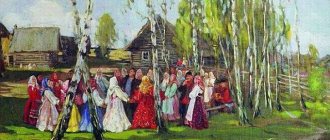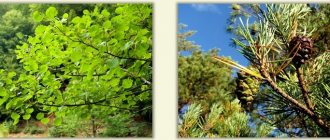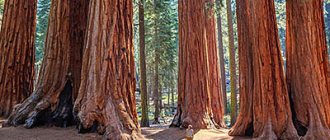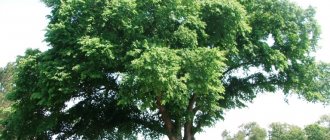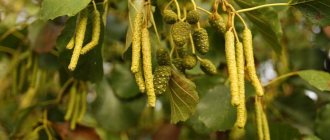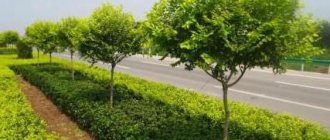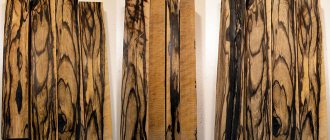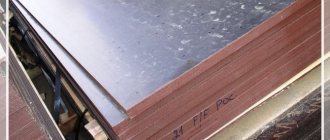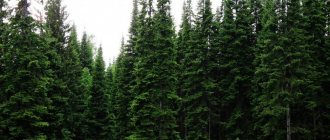Every year, delicate graceful flowers notify people of great joy - the arrival of spring.
In a similar way, the alder tree “tactfully tells” summer residents that it’s time to get to work. When there is still snow on the fields, its buds rapidly swell. Over time, flowers appear on the branches, which are pollinated by a light spring breeze. This happens year after year because life goes on. To truly appreciate the culture, let’s take a closer look at what alder is. What does she look like from the outside? Where does it grow in nature? What properties does it have and is it widely used by people? A fascinating search for answers to questions will certainly bring true pleasure to flora fans.
Myths and legends
There are many myths and legends about this tree.
It is talked about in Greek mythology. Orpheus's first musical instrument was an alder pipe. The connection between the pipe and alder can be seen in the name of this musician, which, according to some historians, is a shortening of Orphruoeis - “growing on the river bank,” thereby indicating alder. The shores of the caves of the sorceresses Sercea and Calypso, who held Odysseus, were overgrown with alder. The myths do not specify what type of alder this or that was, but in nature there are many varieties. The fact that the tree has ancient roots is evidenced by the existence of a certain tribe of Arverni - “alder people”, who lived in the territory where the Celts lived.
Objective description of culture
In books on mythology, the plant is associated with various gods, wizards and witchcraft. In fact, exquisite alder attracts people with its unique “shapes”. Biologists classify it as a member of the Birch family. Some species really look like their “relative,” especially in the spring, when catkins bloom on the crop.
Alder is a slender tree with an erect or slightly curved trunk. It is covered with a glossy gray bark. In its natural environment, the crop grows from 20 to 35 m in height. Much depends on the fertility of the soil and the type of plant.
Crown and flowering
What does alder look like from the outside? The photo clearly shows a lush, slightly sparse crown. It is formed by branches growing unevenly from the trunk. In early spring, they form graceful heterosexual catkins with an abundance of pollen. Male specimens are usually large in size (up to 9 cm). Females reach only 1 cm. After successful pollination, so-called cones with a filmy or scaly surface appear. They ripen and open in the fall. As a result, the seeds fall to the ground or are carried by wind currents over long distances.
In moist soil, the seeds germinate very quickly and create dense thickets near lakes, marshy meadows and rivers.
Fruit
Alder cones of different sizes are fruits. Depending on its type, they are filmy and leathery, while others are wingless. The cones hang closed on the alder all winter, opening only in March and sowing the soil with their seeds.
The cone harvest can be harvested in late autumn and winter if the alder grows on a personal plot. When harvesting cones, they are cut with garden shears. The buds are dried at room temperature. Dried fruits become brown or brown in color. They give off a light aroma. They have an astringent taste.
Foliage Features
When flowering has passed, buds swell on the branches, ready to release fresh greenery. What do the leaves of alder, the humble tree that heralds the arrival of spring, look like?
Looking closely at the plate, we note several features:
- oval shape;
- jagged frame;
- rich green color.
Interestingly, even in autumn the foliage does not change its bright color. After the first frost, it gracefully falls to the ground. The plates are believed to contain large amounts of nitrogen. Therefore, after their “death” they enrich the top layer of soil with a valuable component.
Underground part of the culture
The root system of the alder tree has a surface structure. Its main expanded part is located at a depth of 20 cm. The roots tightly entwine everything that comes in their way. Therefore, the crop is planted near reservoirs to strengthen the coastal slopes of artificial reservoirs.
Unfortunately, due to the shallow structure of the root system, trees suffer from hurricanes.
Botanical description
Alder has a slender trunk, sometimes curved, covered with gray, smooth bark. In the wild, the tree grows more than 20 m in height. It blooms in early spring, covered with fluffy earrings containing pollen. The wind promotes pollination, causing the tree to produce small cones with hard scales that ripen in the fall. Ripe cones open and release seeds, which are carried by the wind over long distances. Once in moist soil, the seeds quickly germinate, creating dense alder thickets on the banks of rivers, lakes or swamps. After flowering, the first buds with leaves begin to bloom. The leaves have a round or oval shape with jagged edges, do not change color until late autumn, and at the first frost they remain green. The leaves contain a large amount of nitrogen, which enriches the soil.
The root system of the plant is superficial. The main root spreads in breadth at a depth of only 20 cm from the surface of the earth. Thanks to this arrangement, the soil is quickly saturated with nitrogen, which is released by nitrogen-fixing bacteria living on root nodules. The ability to braid the top layers of soil is widely used to strengthen the steep banks of rivers and other bodies of water. Often, due to the superficial location of the roots, large specimens are knocked down by the wind.
Trees of the alder genus look different depending on where they grow. They may have differences in the shape of the crown, leaves, bark color and earring shape. Because of these differences, alder is divided into many species and varieties, some of which we will consider below.
Black alder
Alder blooms in April and is pollinated by the wind before its oval or round leaves bloom. She had prepared for spring flowering the previous summer. It is at this time that men's earrings are laid, which grow and form until late autumn. They have a supply of pollen ready for winter. The fruits of this alder ripen by the spring of next year. They are cones with a narrow wing. This can be clearly seen in the photo of the tree and alder leaves.
The bark is dark in color, and there are a significant number of cracks on old branches.
Black alder is found in North America, Europe, Ukraine and the Baltic countries. Loves wetlands. Sometimes black alder looks like thickets, especially in places where there is a stream or small river. There is even a popular saying: “Where there is good alder, there is heaps of hay.” This type of alder is included in the Red Books of Kazakhstan, Moldova and some regions of Russia. Black alder is quite often used by landscape designers for planting valley parks.
Black alder has a significant number of decorative species, differing in the shape of the leaf blade and the shape of the crown. What does alder of these ornamental species look like? For example, oakleaf has lobed leaves similar to oak leaves; the mountain ash has pinnately lobed foliage; Tsarina has small, more deeply cut leaves. And all this is alder.
Kinds
In nature, there are about 40 species of this plant.
Solid alder - can grow as a tree or as a shrub up to 3 meters high. It has flexible branches of yellow or gray-brown color. Earrings are 5-7 cm long, cones are 2 cm. Habitat: Japan.
Elder alder is a tall tree, growing up to 40 m in height. Annual shoots are bright brown and pubescent. It has elliptical leaves, pointed at the top, dark green above, light below. Homeland: Western China. Also common in England, where it was introduced in 1907.
Green alder is a tree or shrub. Maximum height – 20 m. Grows in the Carpathians and Western Europe. Loves sandy loam soils and forms dense thickets called alder forests. Of all types, it is the most frost-resistant.
Siberian alder is a low tree or shrub. It grows in Transbaikalia, Korea and China mixed with conifers. It has round, dark green leaves on top and bluish leaves below. Very rare in culture.
READ Unexpected facts about the native birch tree
Heart-shaped alder or heart-leaved alder (alnus cordata) is an ornamental plant with beautiful glossy ovoid leaves. They are dark green in color, heart-shaped at the base, pointed at the end, and finely toothed at the edges. Grows in southern Italy.
Kola alder is a low tree, reaching a maximum height of 8 m. It has knotty, twisted branches. Outwardly similar to gray alder. Just like it, it has yellowish, shiny bark on old branches. The leaf petioles are pubescent and red in color. The leaves are oval-elliptical with a blunt apex and serrated edges on the sides. Habitat: Kola Peninsula, on the banks of rivers and lakes.
Black alder is the most common species, growing in the European part of Russia, the Caucasus and Western Siberia. Also found in Western Europe and Asia Minor. Has a dark green crown. Buds, young shoots and leaves are sticky. Valuable species for the woodworking industry. The wood is soft and lends itself well to painting and processing. Waterproof. The leaves and cones are used for medicinal purposes, and the bark is used to make a dye used for dyeing leather.
Red alder is a decorative species, valuable for its bright red color of young shoots and buds. The veins and petioles on the glossy, grey-green leaves are also red. Grows in North America. Loves well-moistened, drained soil. It often settles in burnt areas, renewing and enriching the soil.
Types of alder
Today, 29 plant species are classified in the alder genus. However, scientists cannot yet come to a consensus, since the plant itself is prone to modification and hybridization, so some species are classified as hybrid varieties of others.
Black alder (sticky). The plant lives in temperate climates of Western Asia, North Africa and throughout Europe. It is a tree up to 35 m in height, often with several trunks up to 90 cm in diameter. The branches perpendicular to the trunk form a dense pyramidal crown with a diameter of about 12 m. The maximum growth rate is achieved at the age of 5-10 years. The life cycle is 80-100 years. Single specimens live up to 3 centuries. The developed rhizome is located in the upper layers of the soil and is covered with nodules. The leaves are almost round in shape with pinnate veins. Their length is 6-9 cm and width - 6-7 cm. In early spring, earrings 4-7 cm long bloom at the ends of the branches. They are yellowish-brown in color. Pistillate catkins are almost black, they grow on an elongated flexible stalk and are 1.2-2 cm long with a width of up to 1 cm. The fruits do not exceed 3 mm in length. In autumn, their flattened, notched surface becomes wrinkled and reddish-brown.
Black alder (sticky)
Red alder. A very decorative and beautiful tree up to 20 m in height. Its trunk and branches are covered with almost smooth light gray bark, and young shoots are dark red. At first the green shoots are densely pubescent, and then become bare. The ovate, dark green leaves have a pointed edge and serrated sides. On the reverse side, the leaf blade is covered with reddish fibers. The staminate inflorescences are red-brown. The ovoid cones grow to 15-25 mm in length.
Red alder
Gray alder. An unpretentious spreading shrub or tree up to 20 m in height, it has a narrow ovoid crown. The cylindrical curved trunk reaches 50 cm in width. Longitudinal outgrowths and depressions are clearly visible on it. The variety grows very quickly at an early age. The rhizome is located at a depth of 20 cm. The bark is dark gray, not sticky. The oval or lanceolate leaves have a smooth leathery surface on top and are densely covered with silvery hair on the back. Their length is 4-10 cm and width - 3-7 cm. Flowering occurs in early spring, before the leaves bloom.
Gray alder
Distribution and habitats
The main part of the alder range is temperate regions in the Northern Hemisphere. Some species are found in the subalpine belt of the South American Andes, in Northern Vietnam, Korea and China. Until the 18th century, black alder was ubiquitous in Europe and the Middle East, from Lebanon and Cyprus to Sweden and Norway, but alder forests and mixed forests containing this tree species were subject to uncontrolled logging.
Currently, sticky alder forms separate groves along the beds of small rivers, along the banks of swamps and ponds, and is part of small-leaved and mixed forest ecosystems. In Russia, it occupies moist, poorly drained soils throughout the European part, extending beyond the Urals and into the North Caucasus. In the same habitats, but somewhat less frequently, gray alder is found.
This unique tree tolerates any soil quality, as it enters into symbiosis with nitrogen-fixing bacteria and a variety of fungi that improve its root nutrition. Alder trees are grown in nurseries on soils that contain spores and mycelium of mycorrhizal fungi.
Alder forms groves along small rivers, along the banks of swamps and ponds
Conditions for growth
Alder is not picky about environmental conditions , although it prefers moist soil, which is why it can be found mostly near bodies of water. But at the same time it is resistant to drought and wind and has good winter hardiness.
It loves well-lit places , so it grows better in single plantings than in the forest, although it is found there quite often.
The tree is not “conflicting” and grows well next to spruce, birch and linden. Propagation is by seed, using cuttings of root shoots, as well as using shoots from cut down stumps. It begins to bear fruit in open sunny areas at the age of 8-10 years, and in the forest only at the age of 30. Life expectancy is more than 100 years.
The alder tree is a pioneer , it is the first to populate fires, clearings and pastures, fertilizes the soil with nitrogen and leaf litter, and prepares space for other trees.
The tree is a good symbiont for mushrooms: not only around the tree, but also on it itself, different types of mushrooms grow, entangling the space around them with threads of mycorrhiza.
True and false mulberries, alder athelia, brown hypoxylons, and concentric daldinia can grow on the trunk.
What types of alder grow in Russia
In our area, the following types of alder are most often found, namely: gray alder and sticky alder, also called black alder.
The height of black alder reaches 30 m, and the diameter is 80 cm.
Gray alder often grows in the form of a bush; if it grows as a tree, its maximum height will be approximately 15 m and a thickness of 30 cm.
What appearance is typical for these types of alder?
Their main differences are the shape of the foliage and the color of the bark.
Black alder has a darker color , and the leaves, as if soaked in glue, are shaped like an inverted egg, or even completely round.
of gray alder are similar in shape to an ellipse, pointed closer to the edges, and not very sticky.
A - black (sticky) alder: 1 - cones; 2 - inflorescences of staminate flowers; 3 - sheet; b - gray alder: 1 - cones; 2 - inflorescences of staminate flowers; 3 - sheet
Habitats
As its habitat, Black Alder prefers to choose everything that implies a constant amount of moisture: streams, rivers, lakes, old swamps.
Its relative, the gray alder , likes to climb higher, where it is warm and dry.
Also, cleared areas, fires, and wastelands are suitable for its habitat. But in case of high humidity, it also feels good.
Black alder bark
The alder was nicknamed sticky because of its sticky and tenacious leaves. The name black alder comes from the color of the old trunks of this tree; a black bark forms on them.
For your information. If you come across a whole planting of alder trees, you can be sure that there is definitely a source of moisture very close by. It can be in the form of a spring, a small river, fast underground water flowing close to the surface of the earth. In wetlands and lowlands, black alder very often lies in wait; for it, such conditions are very suitable.
Planting and caring for alder
Planting and caring for alder does not present any particular difficulties for gardeners. The tree is unpretentious to the site where it is grown and the choice of soil. Easily adapts to life on open sunny loams or on low-nutrient sandstones located in partial shade. Nitrogen bacteria are able to create their own nutrient layer for the root system of a tree. However, a species such as black alder develops well only on moist, fertile substrates. Representatives of the Berezovs are used as landscapers in the area around reservoirs. Their roots not only ennoble, but also strengthen the coastal boundaries of the land.
The tree is planted in soil that has a neutral and slightly alkaline environment. The soil is enriched in advance with humus, mineral fertilizer and sprinkled with lime. It is better to organize alder planting during the growing season. The bottom of the hole is filled with drainage material; sand or crushed stone will do. The seedling is deepened so that the root collar is at surface level. The area around the trunk is moistened and carefully mulched with straw and peat, trying not to damage the young root layers.
There is almost no need to further care for the alder seedling. It is watered regularly throughout the year, but moderate watering is maintained, without excess water in the soil. To ensure that the roots receive the necessary amount of oxygen, periodic weeding is done. Tools should not be deeply buried, otherwise the root system will be damaged.
A young tree also needs organic feeding. In a year, the seedlings will be able to grow independently without any fertilizers.
Before the arrival of winter, the trees are not prepared in any special way, since the Berezov family calmly survives even the cold and frost that occurs in the harsh northern regions.
Alder is exposed to fungal diseases. The fungus causes changes in the shape of leaves and flowers. As soon as the first symptoms have been detected, the tree is treated with a fungicide solution. The parasitic threat is the woodworm larvae that eat the bark of young branches. These pests are controlled using insecticides. If most of the branch is damaged, it will have to be cut down.
Use of alder
Alder gives three wonderful colors: red from the bark, green from the flowers, brown from the branches, which symbolizes fire, water and earth. Black alder has soft, light wood, it cuts very well, but has one drawback - fragility. Growing trees have white wood. But as soon as an alder tree is cut down, its wood gradually begins to turn red and changes color to yellowish or brownish-red, like a bleeding person.
READ Beneficial properties of Manchurian nut
Alder is noteworthy in that, like legumes, it enriches the soil with nitrogen, since its roots have nodule formations, a refuge for bacteria that collect nitrogen. By the way, small roots, together with the nodules of a tree growing near water, are readily eaten by catfish. Other fish also gather to feed under the tree. This is due to the fact that the leaves falling towards the reservoir under the blow of the wind throw off all kinds of living creatures, which the fish brethren are too keen on. That's why fishing under alder is more productive.
Alder charcoal is also valued. It is used not only for drawing, but also for equipping anti-chemical equipment. Another use of alder is to produce good paint. The bark is infused for two days, then filtered. Dip the fabric into the solution, and after 20 minutes. it acquires a stable brown color.
People have long used alder as a medicinal plant. However, this became known in scientific medicine only in 1942. The pharmaceutical industry has mastered the production of thamelin, a dry extract from alder cones. It is used for acute and chronic stomach disorders, inflammation of the small and large intestines.
Flower catkins collected in March–April are also used for medicinal purposes. They are boiled and made into lotions for diathesis and eczema. The leaves are also boiled. They also help with indigestion. And young leaves can be applied to boils and purulent wounds. The leaves have long been used for colds. To do this, the foliage was moistened with warm water and the patient was placed in it.
The best time to collect cones is autumn and winter. The raw materials are dried indoors or in ovens at a temperature of 50–60 degrees. This beautiful and useful tree is alder.
Alder in folk medicine
Alder leaves, bark, and alder seeds, which are recommended to be collected in late autumn, have a healing effect. When harvesting, the cones are cut with garden shears and then dried indoors at room temperature. If everything is done correctly, the fruits will have a brown or brown color, a light aroma and an astringent taste. The leaves are harvested at the beginning of summer, and the bark at the beginning of winter.
Due to the presence of essential oils, organic acids, tannins, alkaloids and other components, preparations based on alder fruits and leaves have a blood purifying, bactericidal, hemostatic, and astringent effect. Decoctions of the seeds and leaves of this plant provide a diaphoretic and antimicrobial effect and reduce inflammation.
Alder wood
Alder is actively used in the woodworking and furniture industries. And although the wood of the plant is not very dense and durable, it is popular for its lightness, resistance to rotting and the effects of water. At a low cost, the wood is quite light. It behaves well when dried (does not bend or crack). The advantage is the uniform color of the core and sapwood.
Parts for wells, ships, and interior decoration are made from alder. This is what woodcarvers love to work with. Spools of thread and other small products are also made from this tree.
Alder firewood burns without unnecessary soot and gives off a pleasant smell. This is the best material for baths or cooking.
A characteristic feature in the description of this type of alder is the value of its wood. In ancient times they knew that it was durable and did not rot, so it was used for lining wells, making barrels and underwater structures. When drying wood, cracks do not form on it. This makes it possible to make musical instruments from it, in particular, flutes and pipes.
In ancient times, shoes were made from wood and alder bark. Due to the pliability and softness of wood, it is used for making sculptures and panels. After felling, alder wood changes its color from white to red. When it is treated with ammonia and drying oil, it acquires a beautiful sheen. Samples of decorative furniture are constructed from such wood. They make amulets, talismans and amulets from alder, sincerely believing that they will help protect both the home and the person.
In folk medicine, alder bark and cones, which contain large amounts of tannins, are used. Young leaves are used to treat purulent wounds, and for diathesis, a decoction of black alder flowers is prepared. Alcohol infusions of alder catkins are used for constipation.
The main features of alder wood
Alder belongs to the group of deciduous plants from the birch family. This tree grows and develops well near river banks, in swamps and in high mountain areas. Depending on the environmental conditions surrounding the alder, the type of soil, and temperature changes, the plant can be either a tree or a low-growing shrub.
Alder wood does not have a central core in its trunk, due to which the color of its cut is uniform. After cutting, the cut of the tree is whitish in color, but after lying in the air it gradually acquires a yellowish-red color.
Alder wood is valued for a whole group of its main qualities:
- This wood does not rot when used in water, and therefore it was widely used both in ancient times and now in the manufacture of piles and well foundations.
- Alder wood lends itself well to a wide range of joinery applications. It is easy to cut and plan, the wood produces products of various shapes; craftsmen use alder blanks to create unique crafts.
- The special texture of alder wood harvested according to standards allows it to be painted and processed using various paints, polishes, and stains. Thanks to this valuable quality, wood from different types of alder is used as a material that imitates, that is, copies, more expensive tree species. That is, the practicality of alder wood from this aspect of its use in production can be assessed as five points.
- Alder blanks dry practically without warping, which ensures high efficiency of working with this type of processed wood.
READ Ash - everything about the tree: description of the tree, types, places of growth
Alder blanks have increased resistance to external mechanical influences and deformation. Among soft-deciduous plants, alder rightfully occupies a leading position among trees that are highly resistant to rotting processes in water.
Application and significance of alder
Alder is widely used in medicine and construction. In industry, black alder is most valued because, compared to other species, it is the most widespread. The wood is distinguished by its lightness and softness. That is why it is widely used in carpentry, the furniture industry, and various small crafts and turning products are also made from it. This wood is also suitable for making veneers, plywood and pallet boxes. They also use it to build houses and bridges because it is moisture resistant and has high density.
Alder furniture is covered with stain, which improves its decorative qualities and allows it to imitate more valuable wood species, for example: mahogany, cherry and ebony. Thanks to this property, alder wood is highly valued in restoration work. Alder is also used to produce charcoal, which is used for drawing.
Musical instruments are also made from alder wood, replacing resonant spruce wood with it. The fact is that the wood of these species is similar in quality. At the same time, increasingly, the soundboards of musical instruments began to be made from alder.
These highly decorative trees landscape parks. Alder improves the structure of the soil and saturates it with oxygen. Also, forest plantations from alder are increasingly being created, and the trees are subsequently used in the woodworking industry.
A variety of potions and medicines are made from various parts of this tree. It has a wound healing, anti-inflammatory and hemostatic effect. The bark is used to make a product that is used to tan leather and dye it. It is also used to make red, black and yellow paint.
Application in construction
The wood of this tree is used not only independently, but also as a component in the production of particle boards, plywood, and veneer. This is justified by its antiseptic qualities due to its astringent properties. Each type of alder has its own characteristics that determine its area of application.
Black alder is considered the most sensitive to temperature changes, so they try not to use it in the decoration of saunas and baths. What needs to be taken into account when working with alder is that this wood is quite soft and still requires treatment against pests and moisture. Its main advantage is its long service life and the fact that the fibers have a beautiful texture. This species is used to make crafts, toys, paper, and is used as fuel.
Products made from gray alder are better suited for use in wet conditions, which expands the scope of its application. This wood is also ideal for making eco-friendly toys, shoes and some turning tools.
The advantages of this type of wood include the ability to stain beautiful shades and even achieve an imitation of more valuable wood species. Alder boards have healing properties, so they are well suited for interior decoration of houses, saunas and baths. The advantages of building materials made from alder wood are:
- resistance to deformation at high temperatures;
- lack of release of resinous and other harmful compounds;
- ability to absorb moisture well;
- excellent sound and heat insulation properties;
- the fact that condensation does not accumulate on the surface of this wood;
- low thermal conductivity - this reduces the risk of burns to a minimum.
When constructing structures, it is important to take into account one nuance - alder boards should not come into contact with the ground.
This solid wood makes excellent interior doors. Thanks to various treatments, they can be used in any interior, while the price remains quite affordable. Alder doors are completely safe, and also have antibacterial and anti-allergenic properties; they can even be used in children's rooms. They serve for quite a long time.
Alder laminate not only meets all technical requirements, but also has an attractive appearance. It can be considered as a replacement for elite parquet. Such floors do not get too dirty, are easy to clean, and do not require much time for maintenance or any special means for this.
Not only solid wood is used to make furniture; alder is also used in plywood, chipboard and furniture panels. In operation, these types of materials provide the best wear resistance, they do not chip, and are not subject to deformation. Alder furniture is lightweight, but at the same time quite durable.
It is important to know that when working with wood, it is better not to use nails; when driven in, they can split the material. In this case, screws will be an excellent replacement.
Advantages and disadvantages
Each material has negative and positive sides, and alder is no exception.
Alder wood has the following disadvantages:
- Susceptibility to damage due to the low strength and softness of the rock. Requires careful handling;
- It responds poorly to high soil moisture and begins to rot if it is used as a flooring on the ground;
- Mandatory treatment with antiseptic solutions will be required, since alder is susceptible to the development of fungal diseases;
- Low elasticity;
- Does not go well with iron (for example, nails). It begins to oxidize them, which is why unsightly dark circles may form on the surface at the places where they occur;
- Due to its ability to conduct alkaline reactions, it cannot be combined, for example, with cement mortars, otherwise it will begin to rot.
This type of tree has many positive qualities, so they can also be included in a separate list:
- Despite the fact that alder begins to rot in close proximity to the ground, it thrives in places of high humidity. It can also be used for the manufacture of containers and tubs for water;
- Capable of drying quickly when dried, and the dimensions and properties do not change;
- Well suited for processing (sawing, planing, etc.), but may be susceptible to splitting into layers when driving nails. However, this minus can be compensated for if you use screws - this way the tree will remain intact;
- Alder tolerates procedures such as staining, gluing, varnishing and polishing very well, without causing any defects.
The main advantages include reasonable price. Thanks to it, many builders prefer this particular material, widely using it in a variety of industries.
What can be made from alder wood
Solid alder doors
Finishing the bathhouse with alder
Alder furniture
Alder furniture set
Alder bench
Growing alder in garden plots
Many summer residents like to plant ornamental trees and shrubs in their garden plots, turning part of the plot into a piece of a fairy-tale forest. Alder is no exception, especially since its bark, fruits, leaves, and pollen are good folk medicines that are good to always have “at hand.” You can plant ready-made perennial alder trees, small seedlings purchased from nurseries, seedlings from shoots dug up in growing areas, or wait for the seeds of one or another type of alder planted on the site to sprout.
Alder is a large tree. They have a powerful root system, a height of more than 15 meters, and a well-formed crown. If a sufficiently mature tree is planted on the site, the process is labor-intensive. Here you need equipment that will bring the tree and plant it in the prepared place. Planting can be done at any time, but the best option would be to plant alder in the fall and even in winter, when the tree is least responsive to temperature changes and is at rest.
In central Russia, planting time is from November to March. Caring for a tree planted in this way involves intensive watering and loosening in the first year after planting.
In the nursery you can buy shrubby alder, which reaches a height of 3 meters, or is formed in the form of a small tree, which is rarely taller than 10 meters. Shrub alder grows quickly, is not picky about soil, and requires moisture. Alder will transform even the most inconspicuous piece of a personal plot, turning it over time into a cozy green corner.
Where does the alder tree grow?
The alder tree is most widespread in nature in the temperate latitudes of the Northern Hemisphere. In addition, it is often found in South America and Asia. Alder owes its spread to other continents for its practical, healing and decorative properties. However, no matter where this tree grows, it still prefers moist soil. If alder grows on the site, then you can be sure that somewhere nearby there is a reservoir or groundwater that lies close to the soil surface. Alnus is translated from Latin as “coastal, moisture-loving.”
Growing
The plant is unpretentious, so planting is possible anywhere, including on sandstones. The tree has the ability to fertilize the soil with environmentally friendly nitrogen.
It is planted in the usual way during the growing season. The cones of the plant should be collected in the autumn and stored in the fresh air until they open.
Seeds are separated using a sieve, after which they can be planted immediately or postponed for now. Seeds can be stored for no more than 4 months at t° 1-5° C.
When planting, in order for the tree to take root well, it is recommended to prepare a certain substance.
For gray alder:
- sand;
- turf;
- peat;
- lime - 200 g;
- Kemira station wagon - 150 g.
For black alder:
- sand;
- peat;
- humus;
- kemira - 150 g.
Please note: after a year, you need to fertilize with mineral-based fertilizers.
Everything needs to be mixed in special proportions, which can be found at specialized points.
Popular beliefs
Since ancient times, it was believed that alder protected against the evil eye and disease. There was a belief that if you put an alder sliver in the pocket of the newlyweds, it would protect them from damage, and if you bathe in a pond where the alder roots sink, you will definitely gain health.
Alder gained an ambiguous attitude towards itself because in the air the log wood acquired a red-red color, which was called “the blood of the devil.” And therefore, because of this, our ancestors did not plant this tree in their yards and did not build houses from it.
Sources:
- https://sadovnikam.ru/444536a-olha-foto-dereva-i-listev-opisanie-gde-rastet
- https://glav-dacha.ru/kak-vyglyadit-izyskannoe-derevo-olkha/
- https://lesoteka.com/derevya/olha
- https://travoedov.ru/rasteniya/olha
- https://roza-zanoza.ru/derevia/osobennosti-olhi.html
- https://NewDerevo.ru/listvennye-derevya/olha
- https://kvetok.ru/rastenie/olha-opisanie-i-primenenie
- https://kursi-floristiki.ru/otkrytyj-grunt/olha-foto-dereva.html
- https://prirodnoezemledelie.ru/olha-foto-i-vidy-posadka-i-uhod-za-derevom-opisanie-i-lechebnye-svojstva-rastenija-v-chjom-ejo-cennost-drevesiny/
- https://stroyres.net/lesnye-materialy/drevesina/porodi/svoystva-olhi-i-ee-raznovidnosti.html
- https://sadovnic.su/yagody/olha-listya.html
- https://woodonline.ru/projects/derevoteca/olkha/
